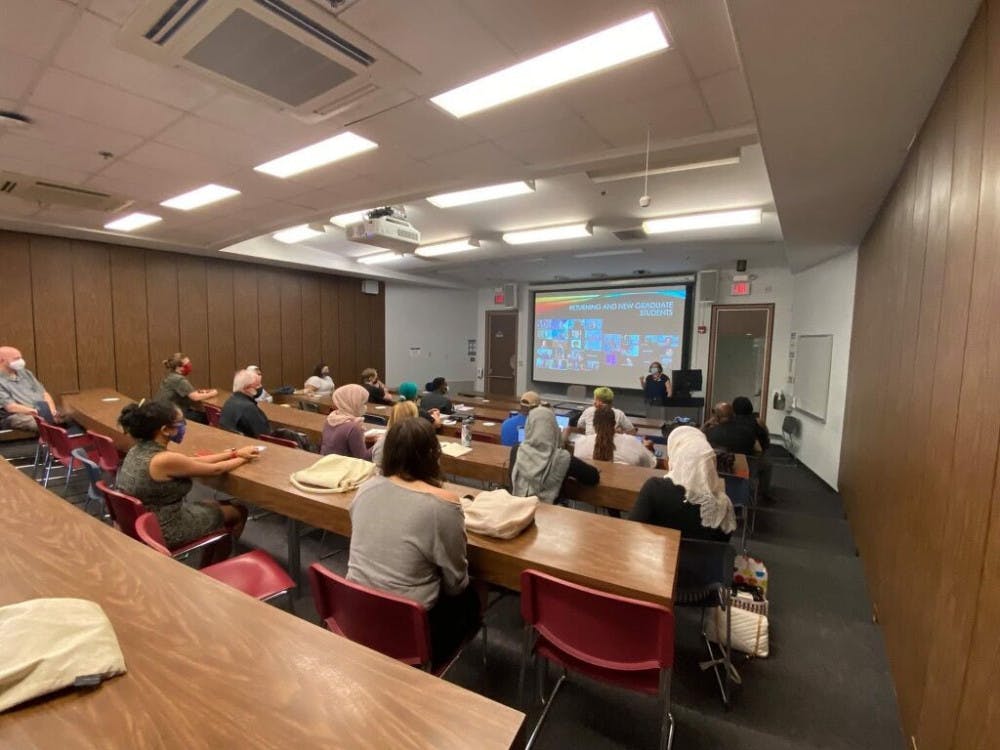The University of Memphis announced the inclusion of a seating chart initiative to its COVID-19 safety requirements on Aug. 30.
In an email sent to students, University of Memphis provost, Dr. Thomas Nenon, announced that beginning Wednesday, Sept. 1, students will be asked to select a permanent seat for each of their classes on campus throughout the fall semester to aid in the university’s contact tracing efforts.
“This will allow seating charts to be created that will help with more accurate and focused contact tracing if a student in one of your classes tests positive for COVID-19,” the email said.
The new seating chart initiative is another safety measure to prevent the spread of COVID-19 on campus on top of everything else that the university has already been doing.
Prior to the seating chart initiative, the university put in place typical safety measures like requiring masks and social distancing among students and staff.
The university also provides COVID-19 testing and vaccinations on campus for students and faculty.
While he didn’t make clear if students and staff are required to follow the new initiative, in an email to the Daily Helmsman, Nenon expressed confidence that most people at the university would comply voluntarily.
“Students and faculty understand the benefits of seating charts for focused and accurate contact tracing, should a student test positive,” he said. “We have no reason to believe that compliance will be a problem.”
The seating chart initiative comes as COVID-19 cases have been rising at the university despite it being less than a month into the new semester.
The university’s most recent COVID-19 data report from Sept. 3 shows that, for students, 107 COVID-19 cases have been contracted on campus and 125 active COVID-19 exposures are being monitored.
For faculty and staff, there have been two cases contracted on campus, while 46 active exposures are being monitored.
Some students expressed approval of the move and the university’s overall strategy to fight COVID-19 on campus.
“I think for how big the school is and how tall of an order it is to try and control COVID-19, the University of Memphis is doing a great job,” said Skylar Sicilia, a sophomore.
Denzel Johnson, a senior, also agreed with the university’s COVID-19 guidelines and protocols but said he believes that they could be enhanced.
“I think the concept of having arranged seats could be conducive to a healthier learning space,” Johnson said. “The problem is once we leave, no one wipes down the desks or seats.”
Some professors at the university, however, expressed mixed views on the decision, with some praising the school’s judgement while others stated concern over their ability to implement a seating chart in courses with large numbers of students.
“I think the university is taking steps to make sure students and professors are safe,” said Jessica Jaglois, an assistant professor in the Department of Journalism and Strategic Media. “I trust their judgement because I know they want students to be in person learning, and they want to do so safely.”
Robert J. Seals, an instructor in the psychology department, on the other hand, believes it will be very difficult to implement a seating chart for some of his courses.
“I can see that it works and is reasonable to do it for classrooms with up to 30 students,” Seals said. “But the logistics when you get above that number can become prohibitive for a number of reasons.”
Seals teaches General Psychology, a 200-student course held in the psychology department’s large auditorium that has 385 total seats.
He also teaches a course called the Psychology of Evil that has 60 students.
Seals explained that with large courses like those, gathering the chart data from the students, converting the information into a single chart as well as re-doing the chart multiple times for students who were absent or on Zoom, could make following the initiative difficult.
“It’s doable, but look at the process it’ll take to get it done,” Seals said. “I think that when this policy came out, it was not thought through very well for larger classes.”
As an added precaution against the COVID-19 virus, students are to maintain the same seat throughout the semester to allow for better contact tracing.






